I sometimes hear the recommendation not to use aracet-type adhesives because they are not resistant in damp or outdoor conditions. PVA (polyvinyl acetate) or aracite adhesives, also called adhesives for wood due to their performance in this area, they come in several types. Like any other product on the market, there are economical and top-of-the-range, depending on the qualities they leave the factory with. There are PVA adhesives that don't stand up to moisture, but there are also adhesives that will hold up even if the glued product boils. The important thing is to use the one recommended for the job. There's no point in buying an exterior-grade adhesive if you're making indoor seating, and there's no point in risking using one that just says 'wood adhesive' with no other specifications if you're going to make solid wood panels for beehive manufacture.
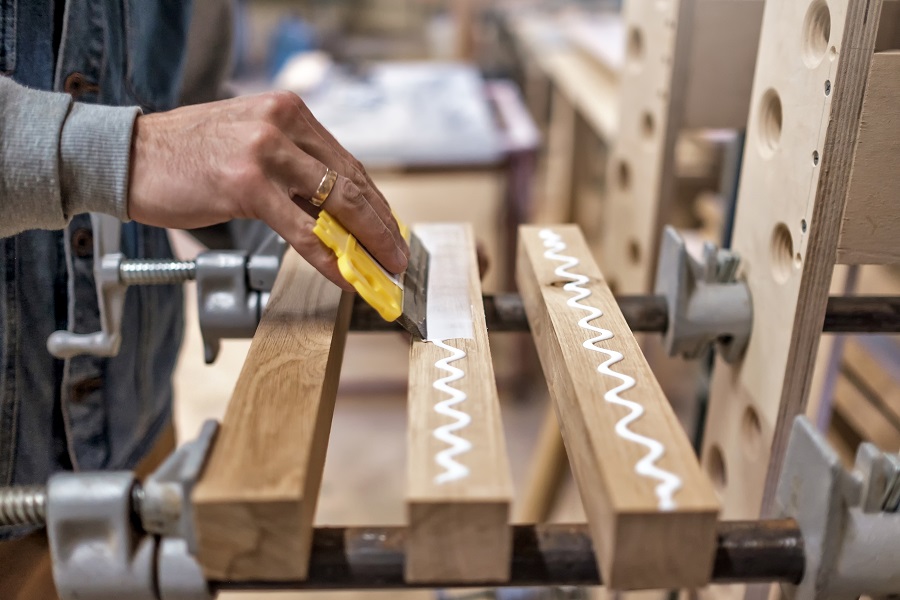
When you use the right PVA adhesive for your job, you'll also get other benefits you may not have considered when you chose it. Here are just a few of them.
PVA adhesives are non-toxic
PVA adhesives are water-based. They do not give off volatile organic compounds (VOCs) like solvent-based ones. As I have already said here, the emission of volatile organic compounds is regulated because of negative effects on the ozone layer and human health.
Apacet adhesives do not have emission of free formaldehyde such as those used to make chipboard or MDF. Furniture made of solid wood (panels, solid wood panels or laminated wood), glued with PVA adhesives, is safe in this respect.
With PVA adhesives you can work without gloves and without a mask, there is no danger if you get dirty or spilled adhesive on another material. It washes off with water and there is no need to neutralize afterwards. It doesn't mean you can eat it though, as it is still an industrial chemical.
They don't turn yellow over time
A quality PVA adhesive does not yellow over time. They are adhesives that change color over time from moisture or UV radiation. This is not the case with aracite adhesives. If they do not become transparent after drying, at worst they remain their original white color. This is a very useful property when adhesives are used in projects where the bond line is visible.
The adhesive film remains flexible after drying
The property is valid for a quality PVA adhesive. The flexibility depends on the fillers added in the adhesive. These are materials added to economical products to decrease the percentage of polyvinyl acetate (polyvinyl acetate), leaving the final product with the same consistency. After drying, however, these adhesives form a stiffer film.
If the adhesive is of good quality, the formed film will be flexible and will not crack if the clamped object is subjected to forces that cause partial deformation.
After drying, the film becomes transparent
Like flexibility, transparency is influenced by the added fillers. Don't expect to take a very inexpensive product and get a solid panel where the glueline is not visible. A quality product, however, will form a transparent, virtually invisible film when dry.
Such adhesives are used for solid wood panels, laminated wood or light beams. The glue line is not visible. We realize that the object is made of several layers of wood only because of the natural design of wood. Such products can be colored without problems with stains, the coloring is uniform (as long as the wood is uniform), without the glue lines showing.
If formulated for outdoor use, it is highly resistant over time, even in harsh conditions
A common misconception is that aracite adhesives are not good for gluing objects used outdoors. If they are made to be used in humid conditions and to resist UV radiation (adhesives of the D3 and D4) are very resilient.
PVA exterior PVA adhesive is not attacked and decomposed by molds or fungi and is not affected by large temperature variations or solar heat. Unlike other types of adhesive it has very good resistance over time and in most cases it will crack the wood before the glue line. If the adhesive is applied correctly and the steps recommended by the manufacturer are followed, the glued objects will have a very long life, even in outdoor conditions.
Does not affect the pH of objects they come in contact with
This may not seem like an important benefit, but for those who glue paper, boxes or other more sensitive objects, it is not. An acidic or basic adhesive can change the color of objects or influence their behavior afterwards. PVA adhesives, with their neutral pH, do not cause any side effects and bonding is safe and without any surprises later.
Some manufacturers push the limits of adhesives by testing them in extreme conditions. This is the case with TISZABOND adhesives produced and distributed by Szolvegy
TISZABOND is the brand of PVA adhesives distributed by the company Szolvegy in Târgu Mureș. The company has a very tough system of product quality control, both in the factory and with distributors and customers. Quality control is done by a neutral laboratory and product samples are randomly taken from the factory, distributors' warehouses and even from customers' production lines. This ensures continuity in quality levels.
What's more, they are in the habit of testing objects glued with TISZABOND adhesives much tougher than the tests they are normally subjected to. For example, wanting to test the resistance of a D4 adhesive with high temperature hardening, they boiled pieces of glued wood for 6 hours. The adhesive was used for gluing light beams to be impregnated in an autoclave at high temperatures. The adhesive behaved very well under long boiling, followed by sudden cooling and splitting, thus assuring the beam manufacturer that they would have no problems during impregnation.
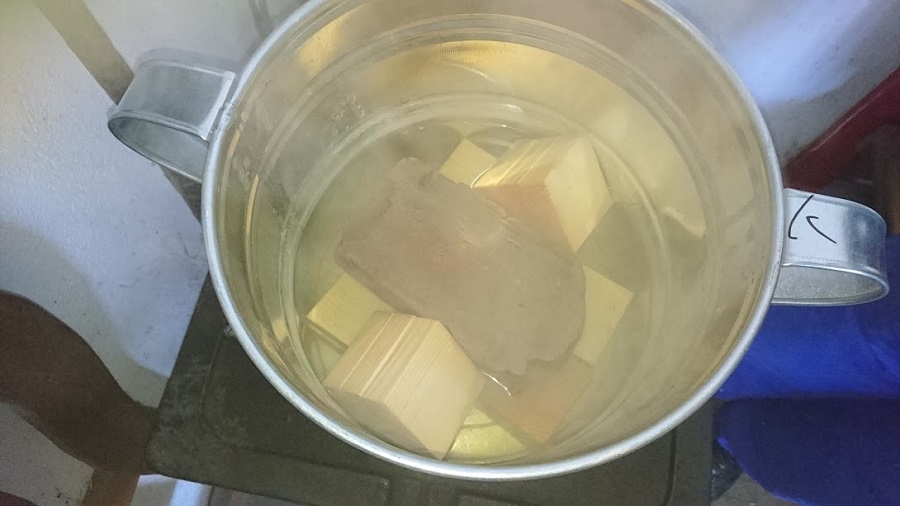
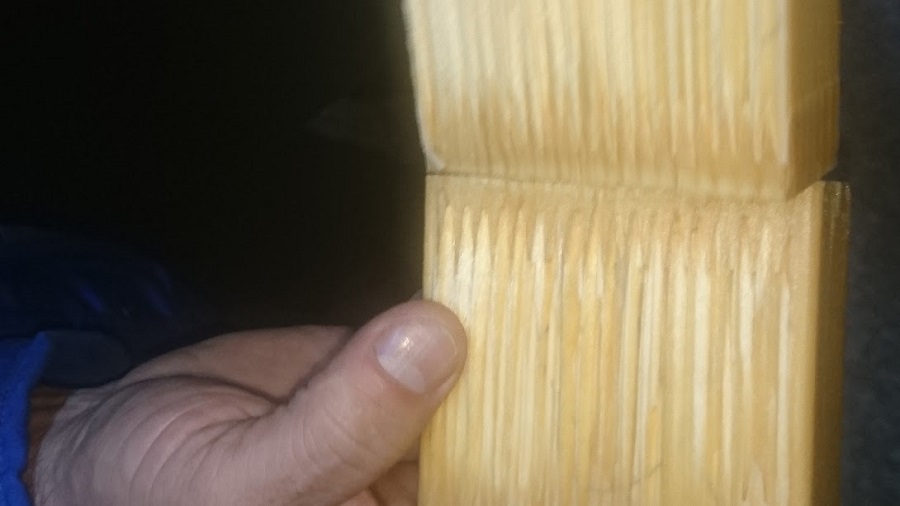
Another test was done with a layered beam that also had toothed joints, using single-component D4 adhesives. After nailing, the beam was left outside for 4 years in rain, wind, snow or strong sun. It has been in contact with the ground for the moisture action to be even stronger. It stood up well to the tests being a guarantee for the manufacturer.
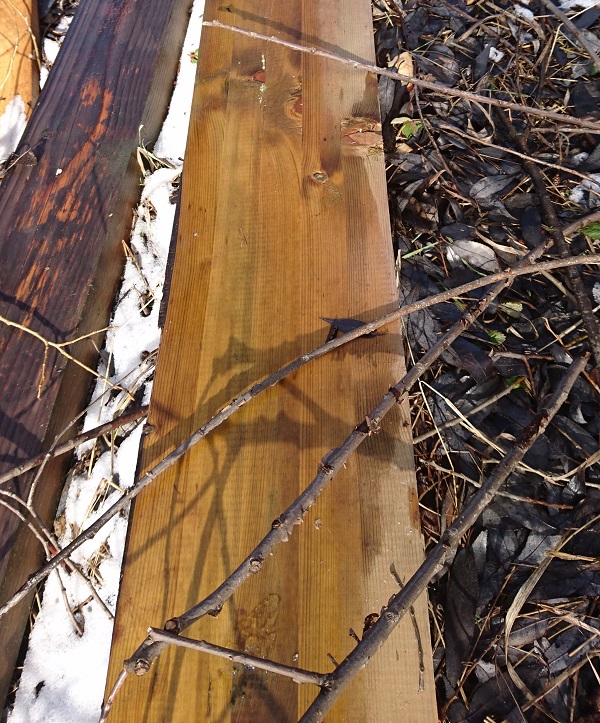
To be sure that the work you are doing will not have any problems just make sure that you choose a quality adhesive that is suitable for the place where the glued object will be used. Don't choose the adhesive on price alone, economy can have very unpleasant consequences!

























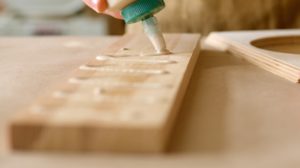


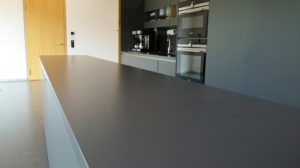

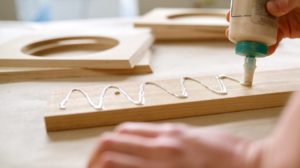
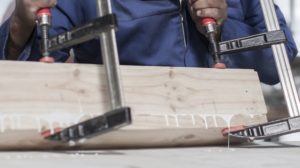
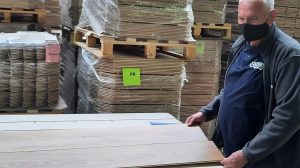



Add comment